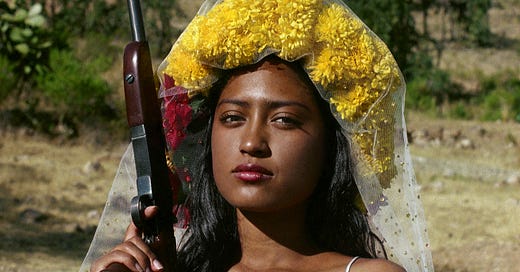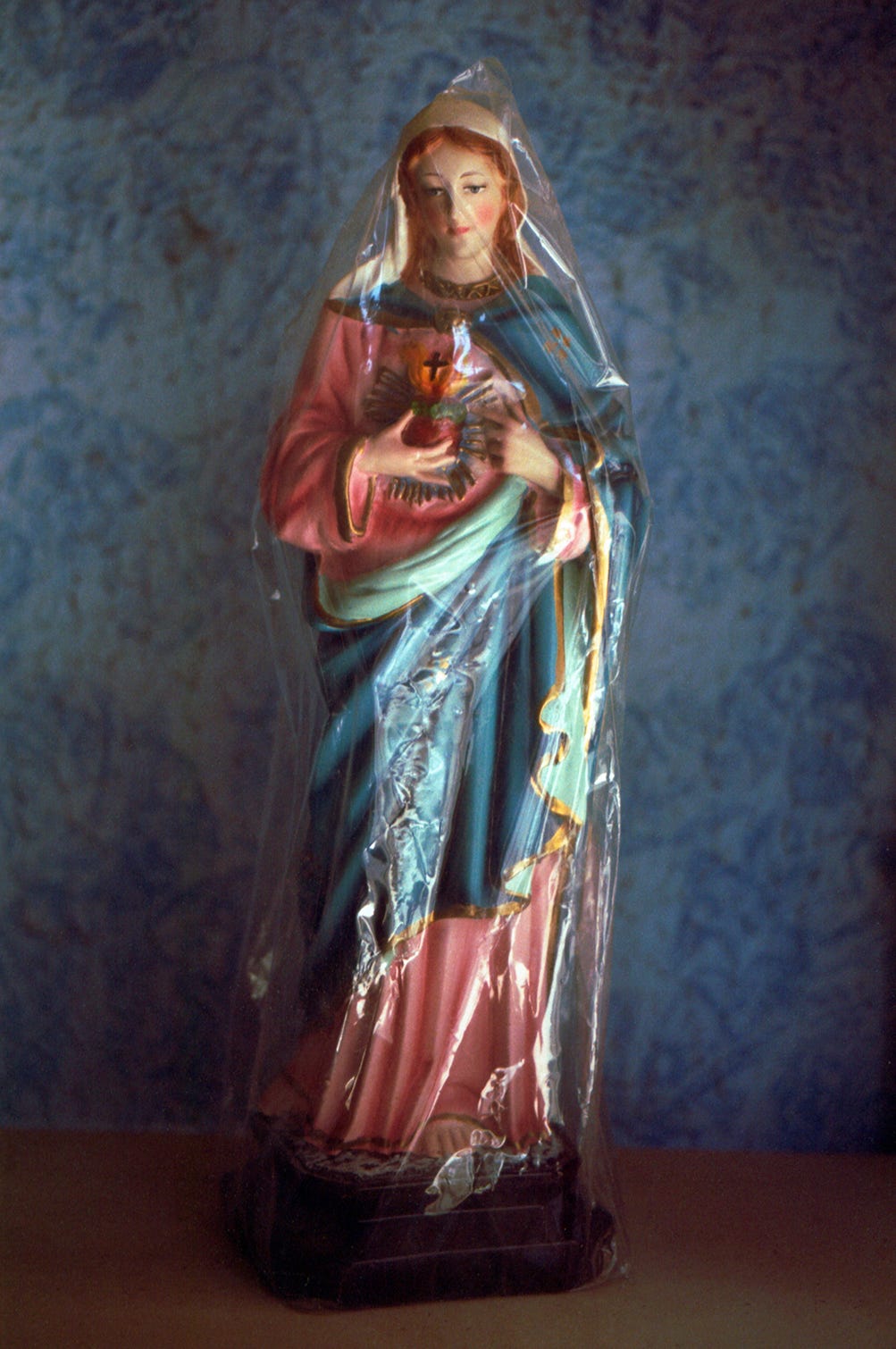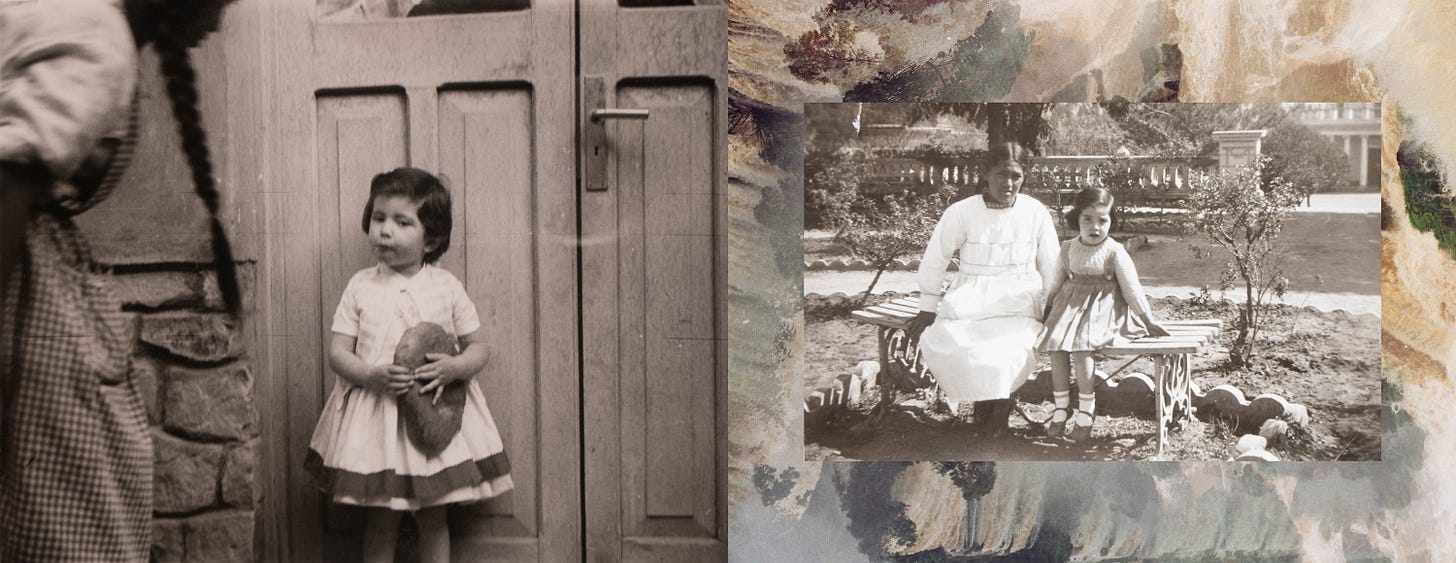The Infinite Resonances of a Single Word: Marisol Mendez’s "Madre"
Arturo Soto on a representation of the cultural conventions that define how women are perceived in Bolivian society.
Returning to one’s country after years of absence can be as transformative as leaving in the first place, instigating a readaptation that confronts our new ways of thinking with the sights and sites that shaped us. However, anyone who has experienced this will know how painful it is to question what you previously ignored or took for granted.
Something along these lines happened to the photographer Marisol Mendez, who, upon her return from Europe, saw more clearly than ever the structural misogyny in Bolivia. To aid her inquiry, Mendez’s mother showed her old family albums so that Mendez could better understand where she came from. These pictures, spanning three generations, solidified Mendez’s desire to make work about the cultural conventions that define how women are perceived in her country.
The outcome is Madre, a handmade photobook that explores various interconnected issues about womanhood. Some of the book’s images – a cave’s entrance, a broken eggshell – are symbolic without being sentimental, while others draw on Mendez’s background in fashion photography to bluntly put their cards on the table. For instance, in what has become the series’ trademark image, a brown-skinned woman in a wedding gown and a veil full of flowers stares into the camera while holding a barrel gun. Her defiance ties her to the figure of Mama Killa, an Incan deity that represented the moon and was believed to safeguard women.
The link between current conceptions of empowerment and indigenous mythologies suggests that women’s social standing in pre-Columbian times might have been more egalitarian than the current status quo. The vitality of Bolivian culture is further embodied in the picture of a cook, midwife, and farmer named Salomé. Mendez says she only agreed to be photographed if she decided how and where to pose and could wear her Cholita Potosina outfit, which she made herself and reserved for special occasions.
Intrinsically related to the customs of indigenous people are the moral values of Catholicism instilled with violence by the colonizers, which still influence many negative behaviors and beliefs toward women. This critique can be inferred through sarcastic visual allusions, like in the picture of a virgin covered in plastic, which some may interpret as modernity suffocating the idol. Others might take the plastic as a shield against the sinful desires of our present, reinforcing the stereotype of a female purity that’s only meant to be broken to bear children.
In other pictures, these theological observations are closer to pastiche, like the woman in combat boots posing as a generic virgin from the Andes. The lack of ethnic diversity in Catholic iconography is directly addressed in a blue-tinted picture of a Cholita flanked by two sui generis plaster angels wearing sunglasses and fatigue pants that could easily pass for DJs or narco bodyguards. Mendez’s photograph contests the typical characterization of the Virgin while blurring the line between Christianity and Bolivian pop culture. An inclusive concept of womanhood in terms of age, ethnicity, and sexual preference is further articulated in a picture of a trans beauty pageant winner in lace panties and high heels. Her provocative stance and exposed breasts make her appear vulnerable and strong in equal measures, even if only the latter is apparent on the wall’s elongated shadow.
A different kind of ambivalence to images, this time influenced by the mechanics of the medium, is explored in a formal studio portrait depicting a woman dressed to impress but showing her discontent. A burn mark above her eyebrow contradicts the drive for unattainable perfection promoted by the beauty industry. Madre is not a compendium of grievances nor shows any graphic violence. Still, I find the above image enigmatic because it hints at the severe problem of gender violence in Latin America. As it turns out, the mark is a development error. Mendez has embraced imperfections like these that expound photography’s ability to imply rather than affirm. The blue tone in the image of the Cholita angel also comes from faulty processing. Their inclusion in the book speaks of the difficulties of working with analog technologies in Latin America (Mendez must travel to Argentina to process her film because no professional labs exist in her native city of Cochabamba).
As much as these images lend themselves to be analyzed according to established iconographies or critical theories – be it decoloniality, feminism, queer studies, or others – we shouldn’t lose track of their capacity to affect viewers in unexpected and contradictory ways. In fact, the mélange of styles, techniques, and registers Mendez uses reflects her mixed feelings towards Bolivia’s social landscape. As such, the process by which we work through our ideas and emotions to make sense of Madre relates to the confusion that prompted Mendez to make the book. Including archival pictures from her grandmother’s albums, printed on a grainer stock and manually pasted in, is another way of communicating the affects that the material aspect of an image can elicit.
Despite the sensitivity of the issues on view, Madre never feels didactic or preachy. If anything, the book contains many veiled connections that prompt us to reflect on our own biases and cultural formations. In some cases, like in the picture of an old woman with cataracts, viewers might be initially drawn by the multitude of pearls or the large circumference of her hat, but to me, the secret of the picture lies in how the sternness of her expression intimates a history of rebellion against the establishment to pursue what her heart wanted at a time when those decisions came at a very high cost. Such moments may be facilitated when female gazes meet and exchange energies that evade simple definitions. This portrait also reminds us that the formal qualities of pictures can be how those energies are transmitted. In Madre, they gradually accrue a melancholic gravitas as we turn its pages. The result is as political as it is aesthetic, and Mendez’s caring vision amounts to a subtle gesture of resistance against the injustices that women constantly experience.
Arturo Soto is a Mexican photographer, writer, and educator. He has published the photobooks In the Heat (2018) and A Certain Logic of Expectations (2021). Arturo holds a Ph.D. in Fine Art from the University of Oxford, an MFA in Photography from the School of Visual Arts in New York, and an MA in Art History from University College London. Arturo lives in Wales, where he is a Lecturer in Photography at Aberystwyth University.
Arturo writes a series of reviews on Latin American photographers for Dispatches: The VII Insider Blog. Check out his other articles:
The Possibilities of the Actual: Adriana Lestido’s "Metropolis"
Pablo Hare: Sites of Exploitation in Peru
Feeling Out the Past: Graciela Iturbide’s “Heliotropo 37”
A Masked Profession: Federico Estol’s “Shine Heroes”
The Persuasions of Disobedience: Ana María Lagos
Messages of Angst and Hope: “Notas De Voz Desde Tijuana”
The Politics of Window Shopping: Pablo López Luz's “Baja Moda”
Life in a Lawless Town: Juan Orrantia’s “A Machete Pelao”
The Disenchanting Hunt for the Truth: Christo Geoghegan’s “Witch Hunt”
Erasure as a Method of Exposure
The Political Price of Dreams: Pablo Cabado’s "Little Suns on Earth"












Thanks for sharing this and introducing me to the photographer's work.